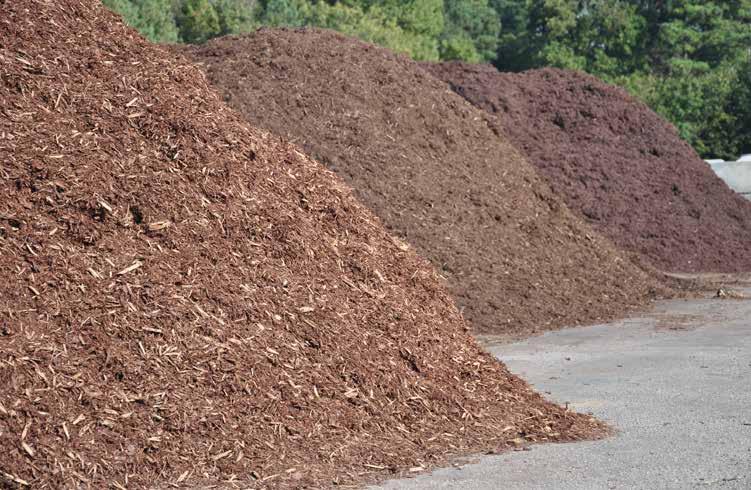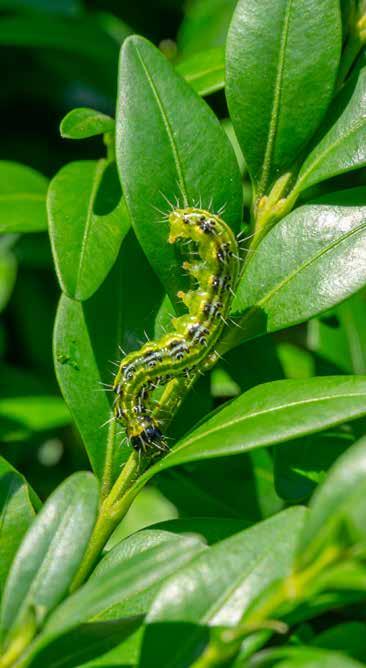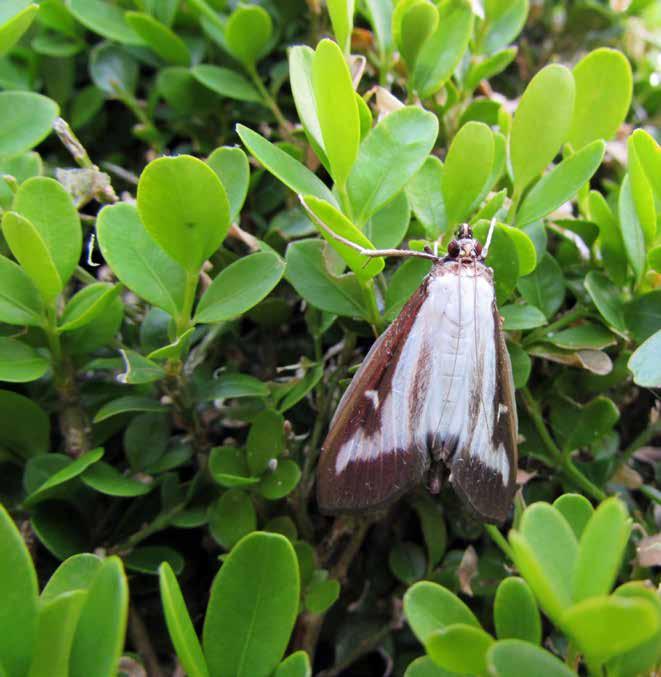
6 minute read
Betting on the Right Chips
From dyed mulch to a more organic approach, the industry’s latest trends are diverse.
By Jimmy Miller
Advertisement
With clients working from home and spending time in their backyard rather than the Bahamas, Laurie Broccolo noticed she fielded more questions this year.
COVID-19 might have kept people out of the office and away from vacation destinations, so Broccolo—the owner of Broccolo Tree & Lawn Care—found her customers were far more engaged than usual. Out in the field, they came out to talk to her employees during lunch. And back at their garden center, clients filtered in all day long rather than in the evenings.
And with that extra attention, every small detail became magnified, including their mulch.
“People were really interested, and they had the time,” she says. “They were working from home, and they needed those breaks. People are actually seeing their plants.”
To help those plants grow and to make garden colors pop, mulch and groundcovers are an essential factor for landscapers to consider. Here are some of the latest trends that industry experts have noticed.
Keeping it natural.
Bob Scott from Lowe’s Landscaping in Chagrin Falls, Ohio, says it should come as no surprise, but most of his clients are on “the organic train.”
Some raise concerns about the overall well-being of the environment. Others ask if there are chemicals in the mulch that’ll be bad for their
kids, or how worried they should be if their dog eats some of the mulch. He estimates that roughly 75% of the mulch they put down for clients is natural, and from a retail end, customers buy it at an even higher rate.
“I think it all starts from a good place,” Scott says. “‘Hey, I never want to make my lawn or yard look a little better at the risk of my dog or kid getting sick.’ And now that it’s caught on, it’s becoming a trend.”
Scott says Lowe’s Landscaping— which has about 60 employees and earns roughly $4 million a year—is often selling its triple shred mulch for that very reason. And during the pandemic, they’ve received more calls for DIYers and saw a slight uptick in installation on the residential side, so he had more conversations with clients than ever about their desire to keep it green. Even their dyed products are made with a carbon dye, he says, to keep things as healthy as possible.
“The more natural, the more organic, the better,” Scott says. “That’s the overarching theme.”
“The plants are the stars. The mulch is just there to accent the plants.” Laurie Broccolo, owner of Broccolo Tree & Lawn Care
Broccolo says that in Rochester, New York, her company is pushing undyed, natural products as much as they can. It’s just a bit of an uphill battle.
“It’s interesting. Pretty much everybody likes the dyed black,” Broccolo says. “We do try and sell undyed, natural, as much as possible. We steer our clients that way. I can’t give in and buy any of the red.”
That dyed black and red is a trend that hasn’t gone away at all. Even for Scott, who sells largely natural mulch, the dyed black mulch is “far and away” his number-two seller.
Color it in.
Christopher Clark with Cut Above Landscaping in North Billerca, Massachusetts, says his company does just about every service a landscaper can offer.
With $750,000 in revenue last year and eight employees, 70% of Cut Above’s clientele comes from the residential side. Clark has seen customers start to buy the dyed products because of the curb appeal, though it’s a recent trend that hadn’t been

prevalent in northern Massachusetts before.
“Personally, I like pure hemlock, but it’s almost hard to find. Everything’s color-enhanced nowadays. The black mulch has seemed to be newer in our area,” Clark says. “It’s just a different color. Sometimes, the color does make green grass pop a little more.”
Scott says some of his clients like that the dyed products tend to last a little longer and not disappear like some of the finer, more natural mulches. And Broccolo says people like the dyed products because it’s showy and contrasts nicely against the grass. While the brown mulch looks lovely, it doesn’t grab someone’s eye while driving past.
But Broccolo says this isn’t the way she thinks about it. “The plants are the stars,” Broccolo says. “The mulch is just there to accent the plants.”
More than mulch.
Groundcovers and stone are another way to accent a landscape, though stone is more widely used in commercial applications, Broccolo says. She’s also seen some younger DIY gardeners in her area request stone as well.
But Clark says the value of lowmaintenance stone like washstone or aggregates can’t be overlooked.
“Stone, depending on the type, can save a lot of money,” Clark says. “You don’t need to do it every year.”
Meanwhile, Broccolo has seen clients request pollinator plants or edibles to fill in spaces in their gardens. Scott says groundcovers like pachysandra or creeping myrtle help him transition many of his clients’ yards from lawn to the wooded areas nearby. Sweet woodruff and bugleherbs also remain popular.
With most of her clients home, Broccolo says they weren’t only asking questions—they were seeing areas of their lawns that weren’t doing well. With that, they wanted answers fast.
“We’re always recommending assertive plants that will fit in pretty quickly, like low-growing shrubs, natives, pollinator plants, even perennial geraniums,” she says. “They grow tall enough to keep the weeds out, and they grow fast enough to fill in the holes.”
Reprinted with permission from Lawn & Landscape magazine, May 2021.

Box Tree Moth Makes an Appearance
By Stanton Gill, Extension Specialist, IPM and Entomology for Nursery, Managed Landscapes and Greenhouses, CMREC, University of Maryland Extension; and Professor with Montgomery College, Landscape Technology
The U.S. Department of Agriculture’s Animal and Plant Health Inspection Service (APHIS) has confirmed the presence of box tree moth, Cydalima perspectalis, in the continental United States and is taking action alongside state partners and industry to contain and eradicate the invasive pest that was imported on nursery plants shipped from Ontario, Canada. The box tree moth can significantly damage and potentially kill boxwood plants if left unchecked. Between August 2020 and April 2021, a nursery in St. Catharines, Ontario, shipped boxwood (Buxus species) that may have been infested with box tree moth to locations in six states—25 retail facilities in Connecticut, Massachusetts, Michigan, New York, Ohio, and South Carolina—and a distribution center in Tennessee. At this time, the pest has been identified in three facilities in Michigan, one in Connecticut, and one in South Carolina, and APHIS is working with state plant regulatory officials to determine whether other facilities may be impacted.
On May 26, 2021, APHIS issued a Federal Order to halt the importa-

tion of host plants from Canada, including boxwood (Buxus species), Euonymus (Euonymus species), and holly (Ilex species). In addition, APHIS is coordinating closely with the affected states to:
• Find and destroy the imported plants in the receiving facilities.
• Trace imported plants that were sold to determine additional locations of potentially infected boxwood. • Provide box tree moth traps and lures for surveys in the receiving facilities and other locations that received potentially infected boxwood.
• Prepare outreach materials for state agriculture departments, industry, U.S. Customs and Border Protection Agriculture Specialists stationed along the Canadian border, and the public.

Egg mass under the leaves.







